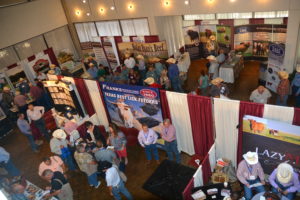COLLEGE STATION – International interest in the Texas A&M Beef Cattle Short Course continues to grow with beef producers from eight countries represented at the recent 62nd annual event.
“Our international beef producers continue to have great interest in how we produce beef here in Texas, and the beef short course provides comprehensive education that no other venue can provide,” said Dr. Jason Cleere, Texas A&M AgriLife Extension Service economist and conference coordinator, College Station.
Duane Lenz, CattleFax analyst, projected growth in emerging markets over the next 10 years, which is good news for Texas beef cattle producers as well as those throughout the U.S.
Lenz provided a graphic showing U.S. Department of Agriculture/Food and Agriculture Organization of the United Nations data that indicates China and Japan lead in increases in both meat consumption and per capita income.
The U.S. and Luxembourg were the top-leading countries. The change in income supports data indicating 89 percent growth in U.S. meat and poultry exports, Lenz said.
“We think more folks have money in their pocket wanting to buy more beef,” he said.
The trade show at the Texas A&M Beef Cattle Short Course features networking among industry vendors and cattle producers. (Texas A&M AgriLife Extension Service photo by Blair Fannin)
Fabiola Hollis, who is originally from Venezuela, was attending the beef short course with her husband, Alan. They raise registered Red Brahman cattle at their ranch near Boling. She says the need for education and learning new technologies is a necessity in Venezuela due to political unrest.
“The people of Venezuela are facing a difficult situation with a shortage of food, even basic medicine and other necessities,” she said. “The country is an oil-producing country, however there is cattle in the southern part. The downturn in oil prices, the restrictions of exports and import production, maybe with all of these economic implications there will be change over time.”
Buck Thomason, a Brangus producer and owner of Indian Hills Ranch in Cranfills Gap, sees the need for international beef education.
“It’s a huge market,” he said. “Say we’ve got 90 million head of cattle in U.S., Brazil has 200 million and going to 220 million. If we can tie those people to Texas A&M and to Texas, it benefits every producer, all the manufacturers and people who have booths here at the beef short course.”
Specifically, Thomason said there’s interest from South America in the more immediate markets of Mexico and Central America.
“The future is overseas,” he said. “If we can tie those people to the education system at Texas A&M, they will always look to the U.S. and Texas specifically for the production systems, education and science we develop here.”
With projections of 9 billion people in the world by year 2050, Thomason said it will be a challenge to produce enough protein.
“We will be lucky to feed our own,” he said. “We’ve always been a huge exporter. It won’t be that way in the future. We will be importers of beef and other proteins. We’ve got to think in those terms. It’s a globalization of the economy and agricultural business. We will be behind the curve if we don’t look at it that way.”
Thomason said the beef short course brings everyone together in one place to discuss producing beef.
“I see people I know from all over the state and some from outside the state because of the knowledge they get from these seminars, the opportunity to meet people and visit with them,” he said. “It’s a huge deal.”





